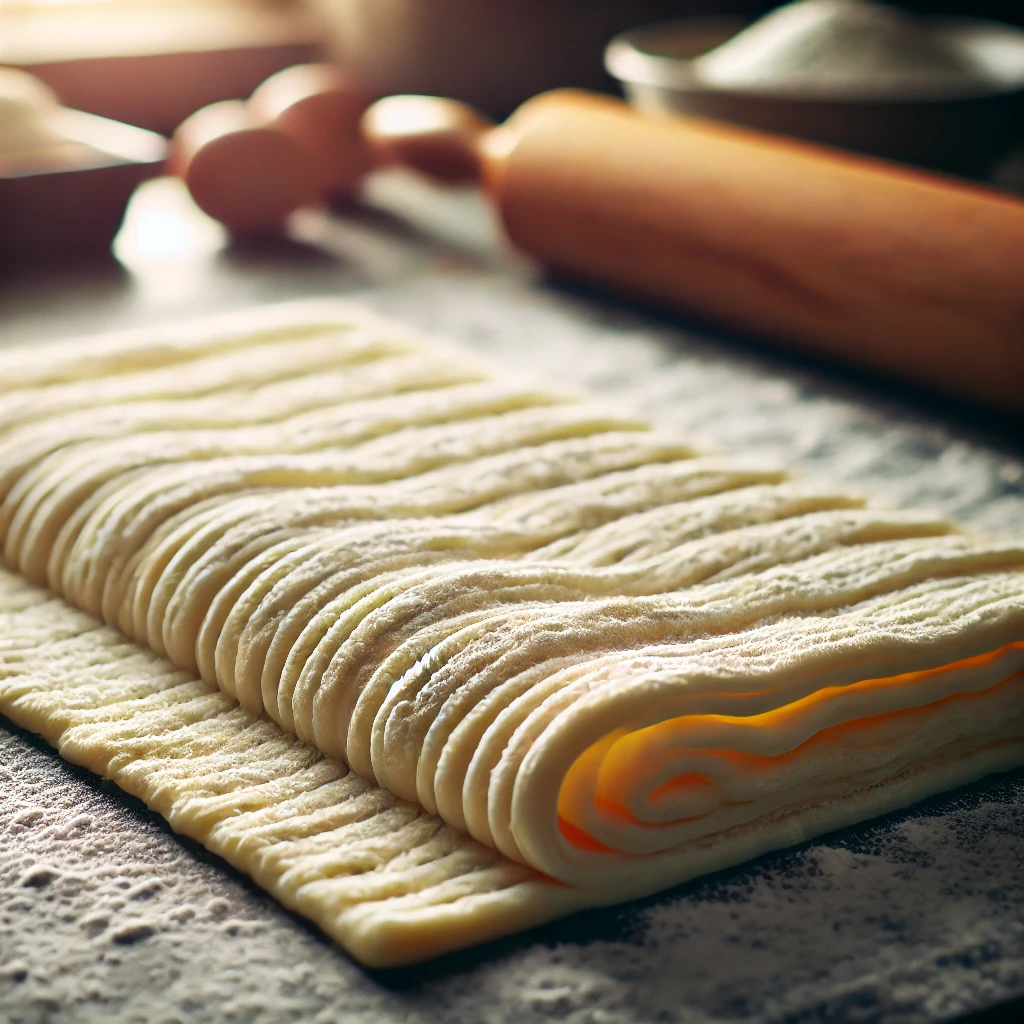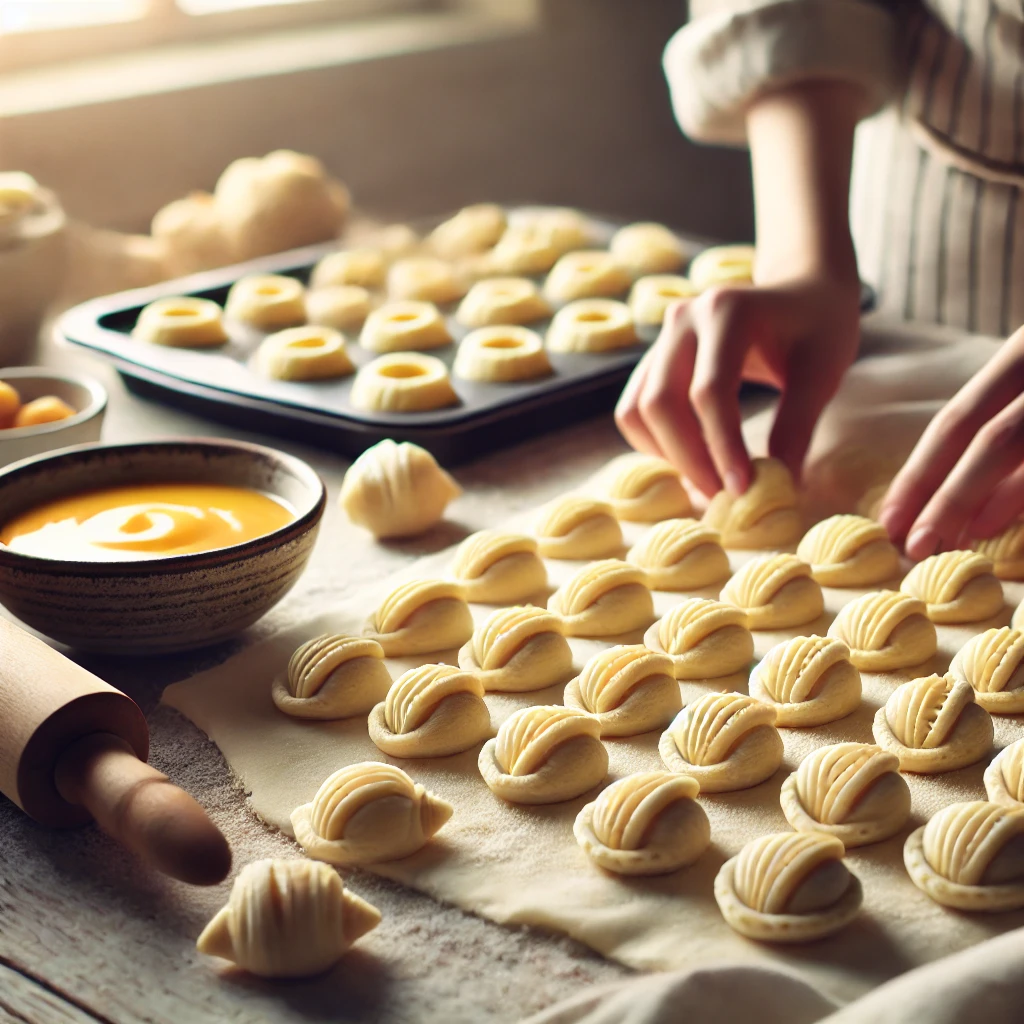Table of contents
- Introduction
- Understanding Puff Pastry: A Quick Overview
- When to Bake Puff Pastry Before Filling
- When You Can Fill Puff Pastry Before Baking
- The Best Way to Bake Puff Pastry for Desserts
- How to Troubleshoot Puff Pastry Mistakes
- Conclusion
- FAQs about Puff Pastry Dessert Recipes
- 1. Can I freeze puff pastry before baking?
- 2. Can I use store-bought puff pastry for desserts?
- 3. How can I make puff pastry extra crispy?
- 4. How do I know when puff pastry is done baking?
- 5. Can I use puff pastry for savory dishes too?
- 6. How do I store leftover puff pastry?
- 7. Can I make puff pastry without butter?
- 8. Why is my puff pastry not rising properly?
- 9. Can I fill puff pastry with liquid fillings like sauces or custards?
- 10. Can I make puff pastry ahead of time?
- 11. How can I get perfect puff pastry layers?
- 12. Can I use puff pastry for mini desserts or appetizers?
- 13. What can I do if my puff pastry is too soft to work with?
Introduction
Puff pastry is one of the most popular and versatile ingredients in both savory and sweet baking. Its delicate, flaky texture and golden, crisp layers make it a favorite for creating a wide variety of desserts. However, when working with puff pastry, there’s an important question that often arises: Should I bake puff pastry before filling it? The answer depends on the recipe and the type of filling you’re using.
In this article, we’ll explore the reasons why prebaking puff pastry may be essential in some cases, while in others, you can fill it and bake it all at once. Whether you’re making a puff pastry dessert recipe like a fruit tart, pastry twists, or cream-filled pastries, understanding the right method will ensure you achieve the best possible result.
Understanding Puff Pastry: A Quick Overview
Puff pastry is made by layering dough and butter, which creates hundreds of flaky layers. When baked at a high temperature, the water in the butter turns into steam, causing the layers to puff up. This unique texture is what makes puff pastry so desirable in both sweet and savory dishes.
However, the way you prepare puff pastry can significantly affect the end result. So, should you bake puff pastry before filling it? Let’s break it down.
When to Bake Puff Pastry Before Filling

1. To Ensure a Crisp Base for Creamy Fillings
If you’re using a wet or creamy filling like custard, whipped cream, or fruit juices, it’s essential to bake the puff pastry before adding the filling. This prevents the pastry from becoming soggy and ensures that it maintains its crisp, flaky texture. Baking the pastry first gives it a firm base that can hold the filling without losing its structure.
Examples of desserts that require prebaking:
- Fruit Tarts: Prebake the puff pastry and then fill with custard and fresh fruit.
- Chocolate Eclairs: Bake the shells first and then fill them with cream or chocolate ganache.
- Napoleon Pastry: Bake layers of puff pastry and sandwich with pastry cream.
Tip:
Use blind baking (pre-baking the pastry without filling) by lining the pastry with parchment paper and placing baking weights on top. This will prevent the pastry from puffing up unevenly and keep it from becoming misshapen.
2. When Making Puff Pastry Shells
For recipes like cream puffs or vol-au-vents, you’ll need to bake the puff pastry before adding the filling. These recipes require the puff pastry to puff up and form a hollow shell, which is then filled with delicious fillings such as whipped cream, custard, or savory fillings like cheese or mushrooms.
Tip:
Ensure the puff pastry is baked until golden and crisp, then let it cool completely before filling. If you fill it too early, the pastry may lose its crisp texture.
When You Can Fill Puff Pastry Before Baking

1. For Pastries That Don’t Need to Rise Much
Certain puff pastry recipes, like savory hand pies or desserts like turnovers, don’t require the pastry to puff up as much. In these cases, you can fill the puff pastry before baking. The filling will not affect the puffing process as long as the pastry is sealed well.
Examples of desserts that don’t need prebaking:
- Puff Pastry Turnovers: These are filled with sweet or savory fillings, folded over, and baked as a whole. No need to prebake.
- Strudels: The puff pastry is rolled up with the filling inside, then baked until golden brown.
Tip:
Be sure to seal the edges well before baking, especially when using moist fillings, to prevent any leakage. You can also brush the edges with egg wash for a golden, glossy finish.
2. For Pastries with Shorter Baking Times
Some puff pastry desserts, like mini puff pastry bites, bake quickly and are small enough that you can fill them before baking. Since the puff pastry is thin and cooks fast, the filling doesn’t have a chance to soak through the pastry.
Examples of mini pastries:
- Puff Pastry Pinwheels: These are filled with jam, cream cheese, or chocolate, then baked to perfection.
- Puff Pastry Twists: Fill with Nutella or fruit preserves, twist the dough, and bake.
Tip:
Watch these pastries carefully while they bake to ensure they don’t burn due to the exposed filling.
The Best Way to Bake Puff Pastry for Desserts
1. Preheat Your Oven
Always preheat your oven before baking puff pastry. The ideal temperature for puff pastry is between 375°F and 425°F (190°C to 220°C). This high heat is necessary to generate steam and make the pastry puff up.
Tip:
Bake on the middle rack for even heat distribution and avoid overcrowding your baking sheet.
2. Use Parchment Paper or Silicone Mats
To ensure easy removal of the puff pastry from the baking sheet, line your baking tray with parchment paper or a silicone baking mat. This prevents sticking and makes cleanup much easier.
Tip:
If you’re blind baking, use ceramic baking beads or rice to weigh down the dough so it doesn’t puff up prematurely.
How to Troubleshoot Puff Pastry Mistakes
1. My Puff Pastry Didn’t Puff Up
If your puff pastry didn’t puff up as expected, the oven temperature may have been too low, or the dough might have been too warm. Make sure your oven is properly preheated, and your puff pastry is cold when placed inside.
Tip:
If you’re blind baking, ensure the puff pastry is weighted properly to avoid any air bubbles.
2. My Pastry Became Soggy
Soggy puff pastry often happens when using wet fillings. As discussed, pre-bake the pastry to create a sturdy base, and use thicker fillings that won’t release excess moisture.
Tip:
For juicy fillings like fruit, you can sprinkle a little flour or cornstarch on the pastry base before filling to absorb excess moisture.
Conclusion
Puff pastry is a versatile ingredient that can elevate both sweet and savory dishes, but knowing how to handle it is key to achieving the perfect results. Whether you’re making a puff pastry dessert recipe or savory treat, understanding when to bake puff pastry before filling it and when to fill it before baking will significantly improve the texture and flavor of your creations.
To recap, you should prebake puff pastry when using wet or creamy fillings to ensure a crisp base and prevent sogginess. For recipes like turnovers or mini pastries, it’s often fine to fill the pastry before baking, especially when the fillings are not too moist. With the right techniques, your puff pastry desserts will turn out light, flaky, and delicious every time.
By following the tips and troubleshooting suggestions in this guide, you’ll gain confidence in working with puff pastry, and your desserts will impress every time. Whether you’re baking puff pastry tarts, turnovers, or other treats, mastering this basic principle will help you create desserts with that signature golden, crispy texture we all love.
FAQs about Puff Pastry Dessert Recipes
1. Can I freeze puff pastry before baking?
Yes, you can freeze puff pastry before baking. Just make sure to wrap it tightly in plastic wrap or place it in an airtight container. You can also freeze individual pieces like turnovers or filled pastries.
2. Can I use store-bought puff pastry for desserts?
Absolutely! Store-bought puff pastry is a great time-saver and works just as well as homemade. Simply thaw it according to the package instructions and use it in your favorite dessert recipes.
3. How can I make puff pastry extra crispy?
To get an extra crispy puff pastry, brush the dough with an egg wash before baking. This gives it a beautiful golden finish and helps the layers crisp up more effectively.
4. How do I know when puff pastry is done baking?
Your puff pastry is done when it has a golden-brown color and is puffed up with a crispy texture. Tap it gently on the bottom—if it sounds hollow, it’s ready.
5. Can I use puff pastry for savory dishes too?
Yes, puff pastry is incredibly versatile and can be used for both sweet and savory dishes. For savory recipes, you can fill it with ingredients like cheese, spinach, or mushrooms and bake it for a flaky, delicious result.
6. How do I store leftover puff pastry?
Store leftover puff pastry in an airtight container or wrap it tightly in plastic wrap and refrigerate for up to 2 days. You can also freeze it for longer storage, ensuring it’s tightly wrapped to prevent freezer burn.
7. Can I make puff pastry without butter?
Yes, you can make puff pastry without butter by using alternatives like margarine or vegetable shortening. However, these substitutes may affect the flavor and texture slightly. If you’re looking for a dairy-free option, vegan butter works well too.
8. Why is my puff pastry not rising properly?
If your puff pastry isn’t rising as expected, it could be due to a few factors:
- The dough may have been too warm when placed in the oven.
- The oven temperature might have been too low.
- The puff pastry was overworked, causing the layers to compress.
Be sure to keep the pastry cold before baking and ensure your oven is preheated to the correct temperature (usually 375°F to 425°F).
9. Can I fill puff pastry with liquid fillings like sauces or custards?
Filling puff pastry with liquids can sometimes result in sogginess. If you’re using custard or sauces, bake the pastry shell first to create a solid base, then add the liquid filling once the shell has cooled down. You can also thicken the filling with cornstarch to reduce moisture.
10. Can I make puff pastry ahead of time?
Yes, you can prepare puff pastry ahead of time. You can either make the dough and freeze it, or you can bake the pastry, cool it, and store it for later use. Just ensure it’s stored properly to maintain its flakiness.
11. How can I get perfect puff pastry layers?
To get perfect layers, make sure to:
- Keep the dough cold at all times.
- Fold the dough evenly.
- Roll the dough gently without pressing too hard.
- Use high-quality butter for the best texture.
12. Can I use puff pastry for mini desserts or appetizers?
Absolutely! Puff pastry is great for making mini desserts like bite-sized tarts, pastry twists, or mini eclairs. You can also create small savory appetizers like puff pastry pinwheels or tartlets.
13. What can I do if my puff pastry is too soft to work with?
If your puff pastry dough is too soft to work with, chill it for 15-20 minutes in the refrigerator. This will firm it up and make it easier to handle.
Happy baking!


1 thought on “Should I Bake Puff Pastry Before Filling It?”